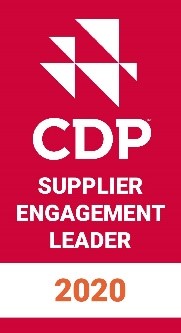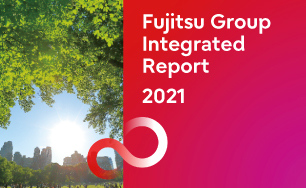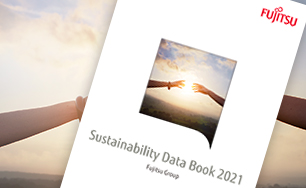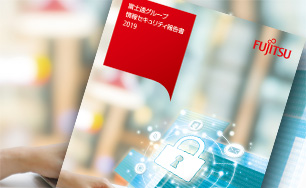-
Sustainability at Fujitsu Group
- Sustainability Management in the Fujitsu Group
- GRB(Global Responsible Business)Goals and Achievments for FY2022
- GRB(Global Responsible Business)Goals for FY2025
- Fujitsu's accessibility
- Stakeholder Engagement
- United Nations Global Compact
- SDG-related Activities in Fujitsu
- External Recognition and Awards
-
Global Responsible Business
- Environment
-
- Environmental Management
- The Fujitsu Group Environmental Vision on Climate Change
- Living in Harmony with Nature (Conservation of Biodiversity)
- Environmental Action Plan
- Environmental Data
- Environmental Communication
- Environmental Social Activities
- Disposal and Recycling of ICT products
- Environmental Considerations in ICT Products
- Governance
-
Data and Documents
- Fujitsu Group Sustainability Data Book 2024
- Social, Governance and Environmental data
- Independent Assurance Report

- GRI Standards / United Nations Global Compact (UNGC) principles Comparison Table
- SASB Standards Comparison Table
- Sustainability Information Disclosure Framework
- Link to regions responsible business reports
- Contact
- Sitemap
Supply Chain
External Trends
Growing Calls for Activities and Reporting across the Entire Supply Chain
Traditionally, companies have been held responsible for measuring and reducing their greenhouse gas (GHG) emissions in two broad areas: Scope 1 (direct emissions: from company factories, offices, etc.) and Scope 2 (indirect emissions at energy sources: from energy consumed by the company, such as electricity). Following the establishment of these standards, the basis of measurement expanded to include Scope 3 (other indirect emissions). This category encompasses all upstream and downstream business activities, such as the procurement, transportation, and usage of products and services. As a result, GHG emission reductions are now expected across the entire supply chain. It is becoming an increasingly common requirement to identify and disclose GHG emissions throughout the supply chain when conducting ESG evaluations for companies and when processing procurement orders for governments and public agencies.
In addition, the TCFD recommendations(*1) call for measures to be taken against risks such as torrential rain and floods triggered by extreme and abnormal weather related to climate change. There are also growing calls to respond to and disclose potential risks faced not only by companies themselves but also by partners in their upstream supply chains.
- (*1)The Task Force on Climate-related Financial Disclosures (TCFD) issued a Recommendations Report in June 2017. The Financial Stability Board established the TCFD at the request of the Group of Twenty (G20) to reduce the risk of financial market instability linked to climate change. The report includes recommendations for companies and organizations to voluntarily identify and disclose information related to risks and opportunities posed by climate change.
Fujitsu’s Position
Management of the Upstream and Downstream Supply Chain is Critical
When considering the lifecycle of Fujitsu’s business activities, approximately 90% of the Fujitsu Group's total GHG emissions are accounted for under Scope 3. Within Scope 3, the major sources of emissions are "purchased goods and services" and "use of sold products". These two categories make up around 90% of our Scope 3 emissions, so we set medium- to long-term SBT targets to focus on reductions in these two key areas. In dealing with upstream supply chains, Fujitsu is not only concerned with reducing CO2 emissions but also investigates the implementation status of water risk assessments by partners, from the viewpoint of business continuity planning. If floods or water shortages impact a partner who manufactures materials or components, it is possible that costs could increase while replacements are sourced, sales opportunities could be lost, and so on.
In terms of downstream supply chains, global data traffic is continuing to increase, with the volume forecast to roughly double from 2018 to 2021, according to the 2019 edition of an annual information and communications white paper published by Japan’s Ministry of Internal Affairs and Communications (MIC). In the face of growing demand for data communications, we believe it is critical to develop products with even higher levels of energy efficiency.
Approach under the Fujitsu Group Environmental Action Plan (Stage IX)
Promoting Reduction of CO2 Emissions and Conservation of Water Resources in the Supply Chain
In the Fujitsu Group Environmental Action Plan (Stage IX), we set a target to drive activities to reduce CO2 emissions and conserve water resources in the upstream supply chain. Regarding reductions in CO2 emissions, we have boosted our efforts to encourage not only our primary partners, but also our secondary partners through those primary partners, to undertake activities to cut their emissions. Furthermore, we intend to support our partners' emission reduction activities by providing advice on energy conservation and direct assistance based on our own experience in this field. As for challenges regarding water, we believe that appropriate measures are necessary to respond to the specific water risk situations of our partners, and we will work with them to assess and analyze water-related risks. In addition to our in-house initiatives, in FY 2018 we started collecting information and encouraging our partners to reduce CO2 emissions, mitigate water-related risks, and cut water usage volumes through the internationally standardized methodology of the CDP Supply Chain Program(*2). To address issues in the downstream supply chain, we will pursue the development of advanced energy-saving technologies to create products with lower power consumption requirements than in the past.
- (*2)CDP Supply Chain Program: One element of CDP’s services, this program requests companies and government-designated suppliers to respond to a questionnaire on environmental impacts in three areas – climate change countermeasures, water resource conservation, and forest preservation – and feedback is provided on the results.
Fujitsu Group received the "A" in the "Supplier Engagement Rating" from the CDP

The Fujitsu Group received the highest grade of A in the " Supplier Engagement Rating (SER) " from the CDP, an international NGO that conducts environmental information surveys and discloses information, and was certified as a "Supplier Engagement Leader Board". The assessment will be conducted with more than 5,640 companies and organizations worldwide that have responded to the CDP's Climate Change Questionnaire from the perspectives of "supply chain engagement" "Calculation of scope 3 emissions" and "Governance". In 2020, only 396 companies (top 7% of companies) received an A rating.
RELATED LINKS
Actions and targets related to climate change initiatives under the Fujitsu Group Environmental Action Plan (Stage IX)
- Reducing CO2 Emissions Through Products That Consume Less Power When in Use
https://www.fujitsu.com/global/about/environment/energy-efficiency/ - Activities to Reduce CO2 Emissions and Conserve Water Resources in the Upstream Portion of the Supply Chain
https://www.fujitsu.com/global/about/environment/procurement/



